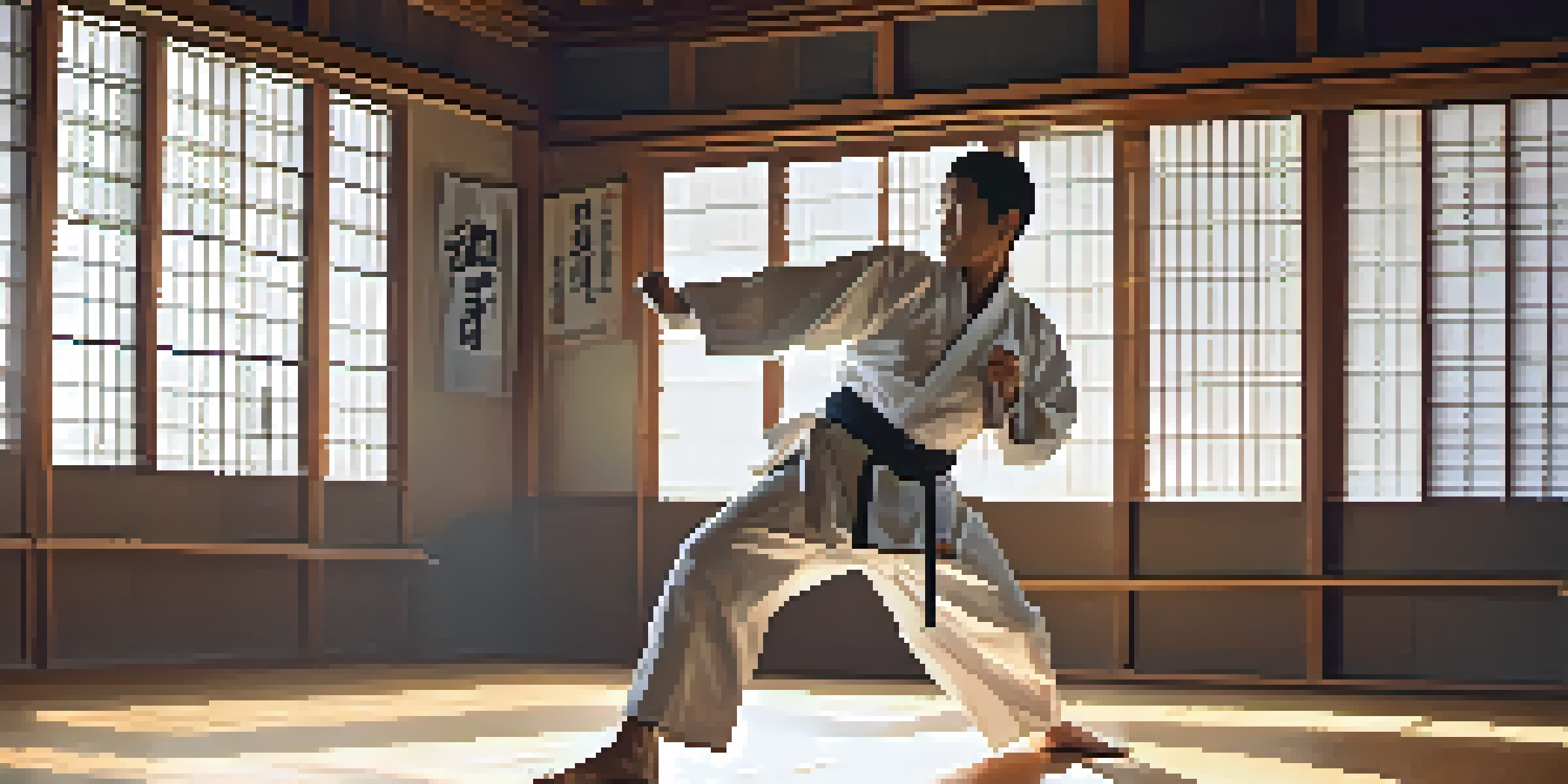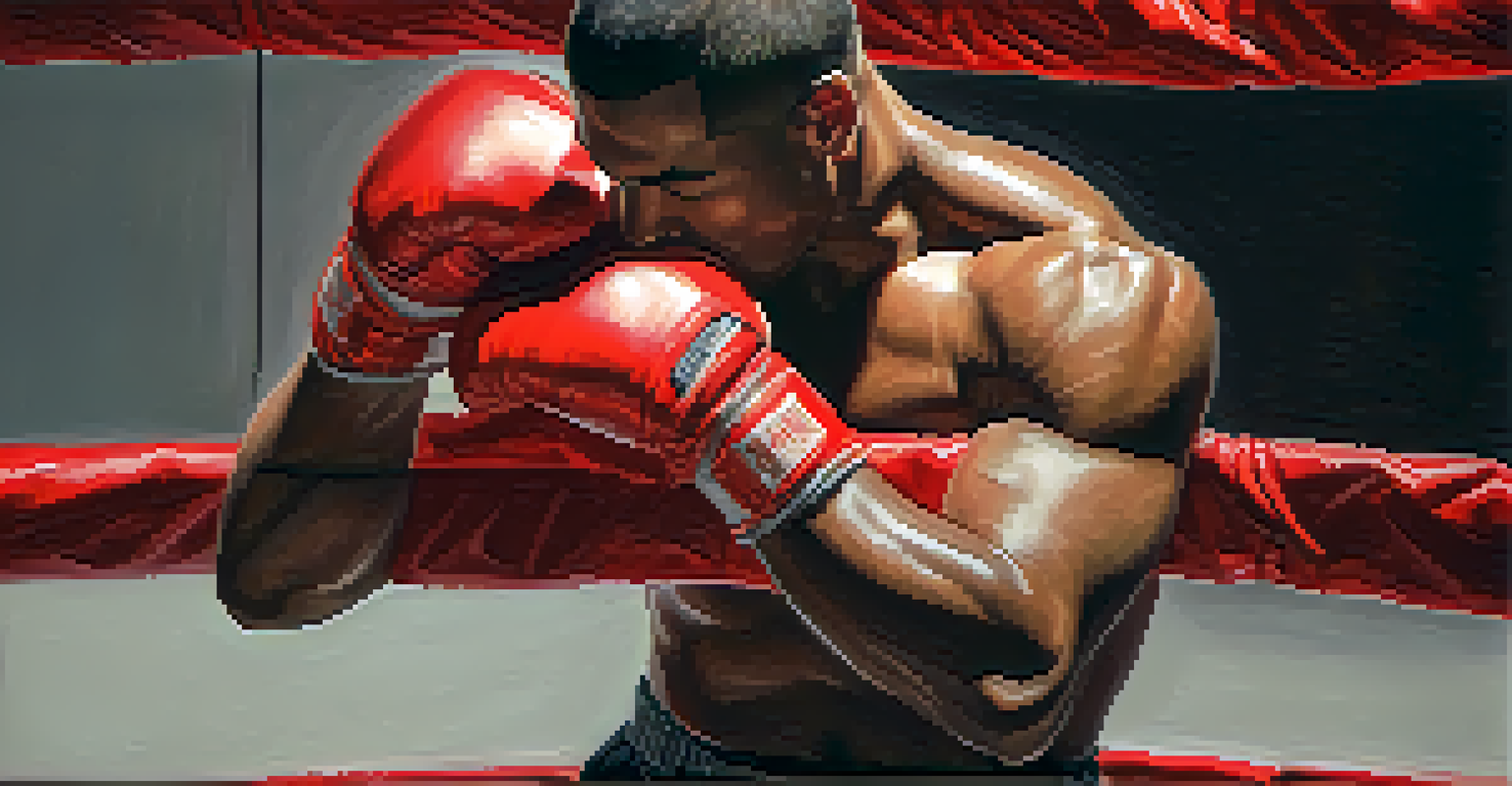The Science of Conditioning: Building Endurance for Martial Arts

Understanding Endurance in Martial Arts Training
Endurance in martial arts refers to the ability to sustain physical effort over extended periods. This is crucial for fighters, as matches can demand high levels of energy and stamina. To put it simply, the longer you can keep going, the better your performance will be.
Endurance is the foundation of all physical activity.
There are two main types of endurance: aerobic and anaerobic. Aerobic endurance involves steady, prolonged activities like running, while anaerobic endurance focuses on short bursts of intense activity, which is critical in sparring and competition. Understanding these differences helps tailor your training for specific martial arts goals.
By building both types of endurance, martial artists can enhance their performance. Imagine a boxer who can keep throwing punches without tiring out—this is the power of conditioning. The right training can make all the difference in the ring.
The Role of Aerobic Conditioning in Martial Arts
Aerobic conditioning is essential for improving cardiovascular fitness. This type of training allows martial artists to recover faster between rounds and maintain energy levels throughout a match. Activities like jogging, cycling, or swimming are excellent ways to build aerobic capacity.

Incorporating aerobic workouts into your routine can significantly impact your endurance. For instance, consider a martial artist who runs three times a week—this athlete will likely find they can outlast opponents in longer bouts. Plus, these sessions can help improve overall health and well-being.
Endurance Types: Aerobic vs Anaerobic
Understanding both aerobic and anaerobic endurance is essential for martial artists to enhance their performance during training and competitions.
To maximize aerobic benefits, aim for steady-state cardio sessions that last at least 30 minutes. This will help develop your heart's efficiency and your body's ability to utilize oxygen effectively, key components for any martial artist looking to excel.
Anaerobic Conditioning: Short Bursts of Intensity
Anaerobic conditioning is all about short, high-intensity activities that push your limits. Think of it as sprinting versus jogging; both are effective but serve different purposes. For martial artists, anaerobic training mimics the explosive movements needed during sparring or competitions.
The difference between a successful athlete and an unsuccessful one is often in their ability to endure.
High-Intensity Interval Training (HIIT) is a popular method for building anaerobic endurance. By alternating between intense bursts of activity and short rest periods, martial artists can train their bodies to perform optimally under pressure. Imagine a fighter who can deliver rapid strikes without losing steam—that's the benefit of anaerobic conditioning.
Incorporating exercises like sprinting, kettlebell swings, or jumping rope into your routine can enhance your anaerobic capacity. The goal is to develop quick bursts of energy that can be sustained throughout a match, ensuring you stay competitive when it counts.
Strength Training: A Key Component of Conditioning
Strength training plays a pivotal role in building endurance for martial arts. By increasing muscle strength, athletes can perform techniques with greater efficiency and less fatigue. Think of it as building a solid foundation for a house; without it, everything else may crumble under pressure.
Incorporating resistance exercises, such as weightlifting or bodyweight movements, helps improve muscle endurance. For instance, performing push-ups or squats can enhance your ability to execute strikes or maintain stances longer. This not only boosts performance but also helps prevent injuries.
Recovery is Key to Performance
Prioritizing recovery allows martial artists to repair and strengthen their bodies, preventing burnout and improving overall endurance.
Aim for a balanced strength training program that targets all major muscle groups. This will ensure that your body is strong and resilient, allowing you to endure the rigors of martial arts training and competition while minimizing the risk of overuse injuries.
The Importance of Recovery in Endurance Training
While training hard is crucial, recovery is equally important for building endurance. This is the time when your body repairs and strengthens itself, preparing for the next training session. Without adequate recovery, you risk burnout and decreased performance.
Incorporating rest days and active recovery sessions can help your body recuperate. Activities like light stretching, yoga, or leisurely walks can keep you active without overexerting yourself. Think of recovery as the reset button for your body, allowing it to bounce back stronger.
Listening to your body is key; if you're feeling fatigued or sore, it's essential to give yourself time to recover. By prioritizing recovery, you'll not only enhance your endurance but also improve your overall training experience and longevity in the sport.
Nutrition: Fueling Endurance Training Effectively
Nutrition plays a fundamental role in supporting your endurance training. Consuming the right balance of macronutrients—carbohydrates, proteins, and fats—ensures your body has the energy it needs for intense workouts. Think of food as the fuel that powers your training engine.
Carbohydrates are particularly important for endurance athletes, as they provide quick energy for high-intensity activities. Including whole grains, fruits, and vegetables in your diet can help replenish glycogen stores, keeping your energy levels up during training sessions.
Nutrition Fuels Endurance Success
A balanced diet rich in carbohydrates, proteins, and hydration is crucial for maintaining energy levels and supporting intense training sessions.
Additionally, hydration is vital for maintaining performance. Dehydration can lead to fatigue and decreased endurance, so it's crucial to drink enough water before, during, and after your workouts. By prioritizing nutrition and hydration, you'll set yourself up for success in your martial arts journey.
Mental Conditioning: The Overlooked Aspect of Endurance
Mental conditioning is often overlooked but is crucial for building endurance in martial arts. Developing a strong mindset can help you push through fatigue and stay focused during challenging training sessions or competitions. It’s like training your mind to be as strong as your body.
Techniques such as visualization, meditation, and positive self-talk can enhance mental strength. For example, visualizing yourself successfully completing a tough workout can boost your confidence and motivation. The mental aspect of training can often be the difference between winning and losing.

By incorporating mental conditioning into your training regimen, you’ll build resilience and improve your ability to handle pressure. This holistic approach to endurance—combining physical, nutritional, and mental elements—will prepare you to excel in martial arts and beyond.